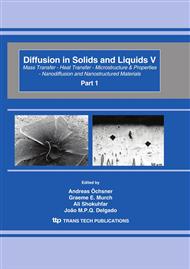p.126
p.132
p.142
p.148
p.154
p.162
p.169
p.181
p.187
A Lattice Monte Carlo Analysis of Thermal Transport in Phase Change Materials
Abstract:
Heat sinks enable the storage of energy that would otherwise be lost, thus ensuring significant energy-savings and fewer greenhouse gas emissions. Heat sinks also play the major role in the efficient temperature control of devices such as batteries. In principle, any material can act as a heat sink – traditionally, copper is used for many applications. However, copper is relatively expensive, has a high density and only a limited energy storage capacity. In contrast, a phase-change material (PCM) allows in effect an additional storage of energy through its phase change thus greatly increasing the achievable energy density. The aim of this work is the numerical analysis of the transient heat transfer in composite heat sinks containing phase-change materials. For the first time, a recently formulated Lattice Monte Carlo Method is applied to determine temperature distributions and the amount of energy transferred versus time in phase change materials.
Info:
Periodical:
Pages:
154-161
Citation:
Online since:
April 2010
Authors:
Price:
Сopyright:
© 2010 Trans Tech Publications Ltd. All Rights Reserved
Share:
Citation:


